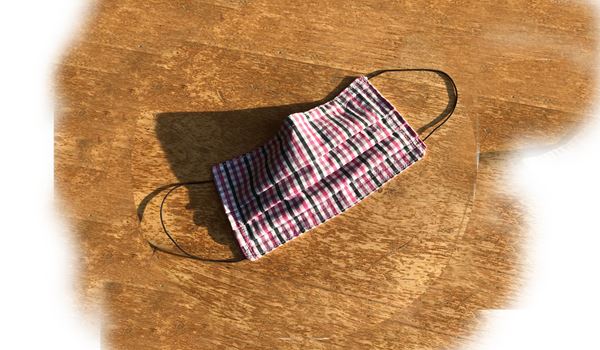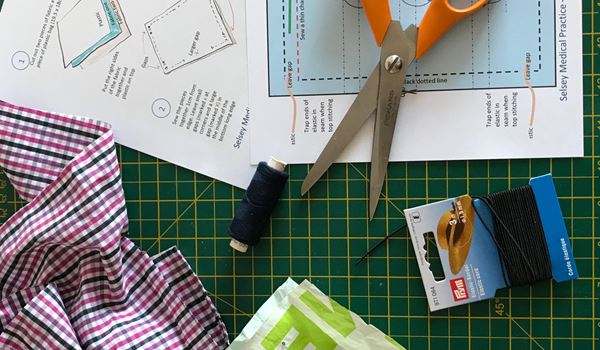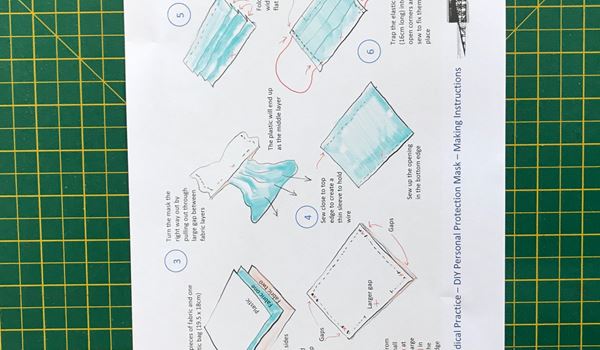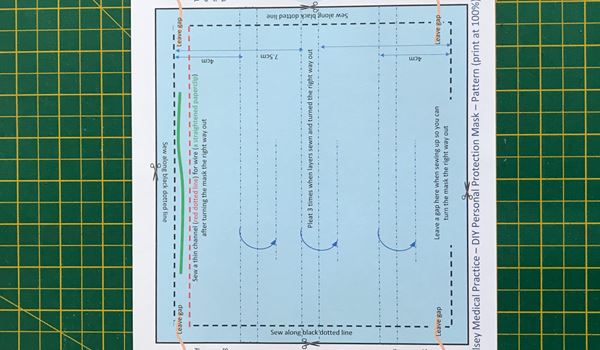You can print out the pattern and cut round it like a normal dressmaking pattern. Make sure you print at exactly 100% scale though (our printer always tries to scale it down for some reason!)
We recommend some thin fabric like polycotton for the mask - we used a worn-out men's shirt (from a worn-out man!) - you will need two layers 19.5 x 18 cm. We put a filter layer in between - there have been lots of suggestions for what to use here, ranging from plastic (provides a shield, air comes round the sides) to coffee filters (air is breathed through the mask but this needs to be washed/re-filtered regularly). You can experiment with materials for this layer but it should be washable or removeable.
You will need two pieces of thin elastic between 18cm long (small head) and 20cm long (larger head) for the ear loops. If you can't find elastic you might be able improvise with wool or string.
Obviously it helps if you have a sewing machine but the mask can be sewn by hand as it is quite small.
We sewed in some thin wire to shape the nose edge - we used a straightened out paper clip, but you should bend the ends over so there are no sharp parts.
Once you have ironed in the pleats (low temperature setting if you use some kind of plastic for the filter) and it is all assembled, you can top stitch up each side to trap in the elastic and fix the ends of the pleats.



